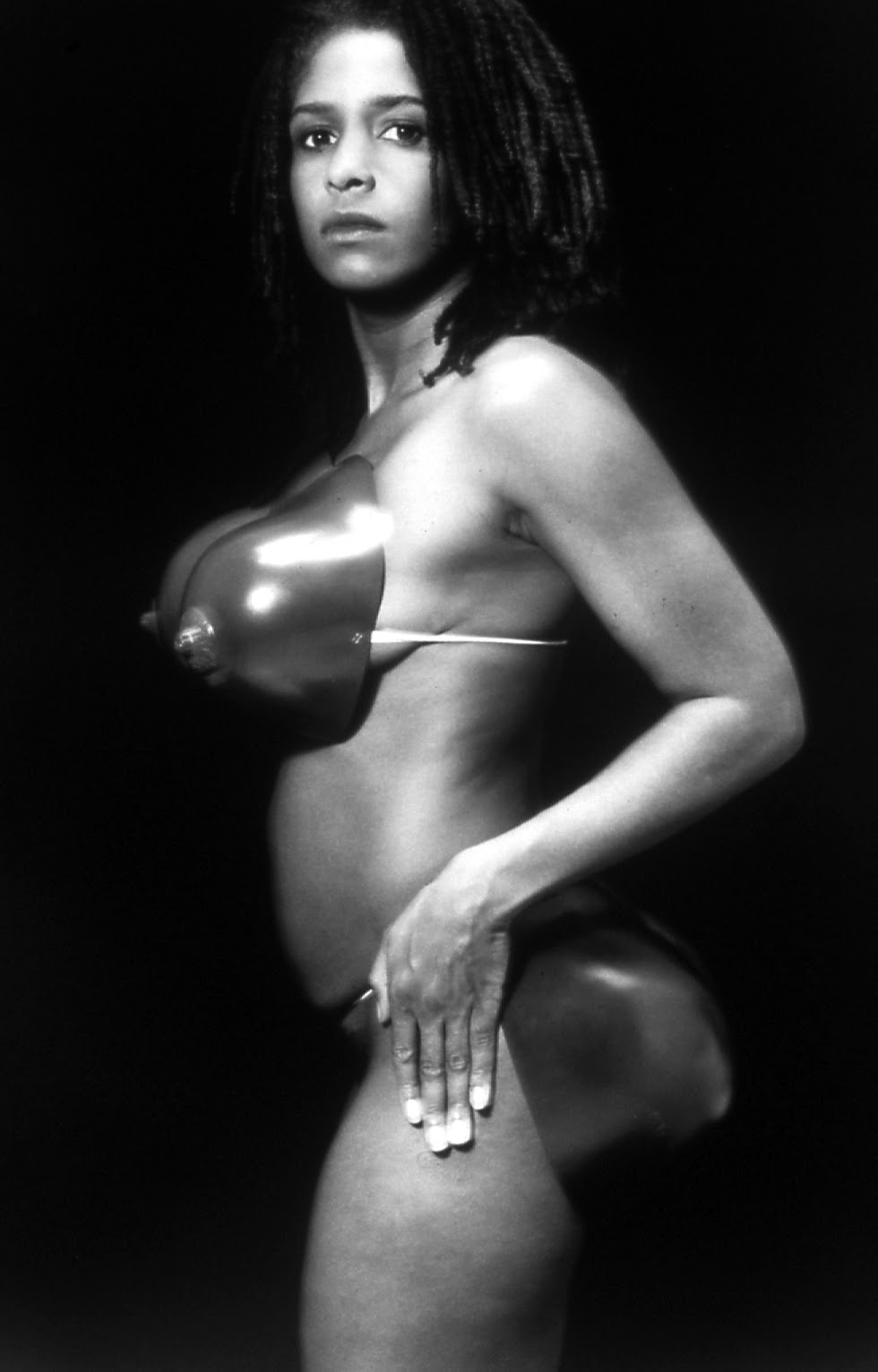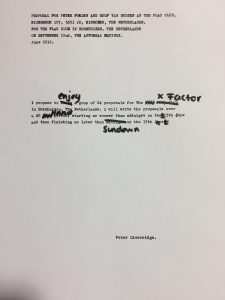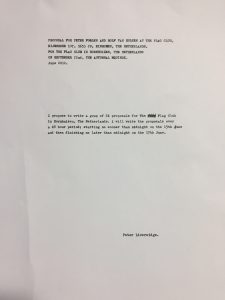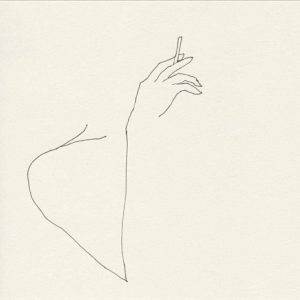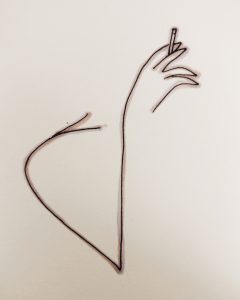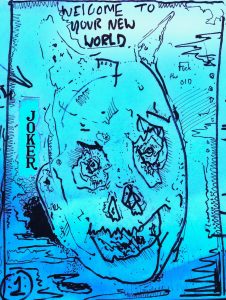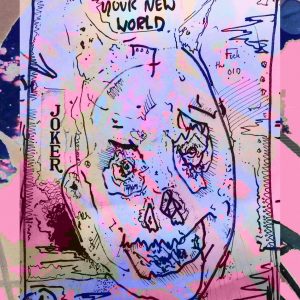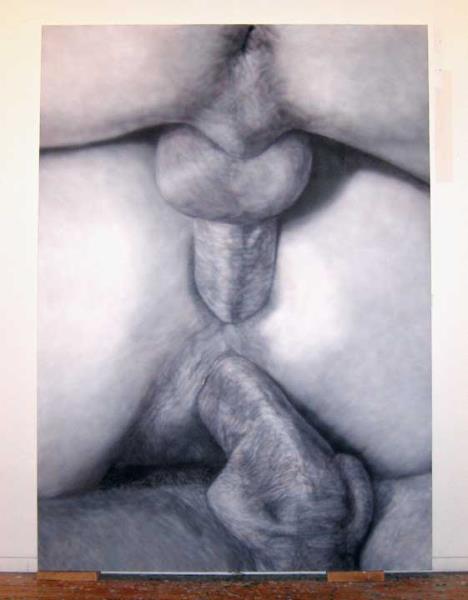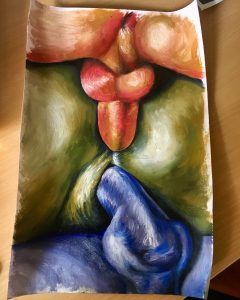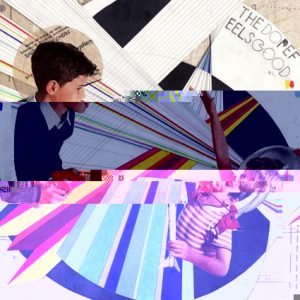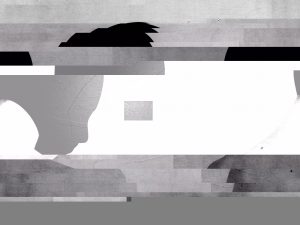Renée Cox – Hot-en-tot Venus (1994)
‘Hot-en-tot Venus’ shows a black woman posing with her back arched, facing the camera, and has augmented breasts and rear attached to her; the image has then been rendered black and white. I believe that the piece is making a feminist statement about black women and how they’re stereotype in terms of looks. The woman is evidently arching her back to emphasise the point being made. The expression on her face comes across as sombre and melancholy, showing how stereotyping can affect someone about features they can’t change.
The context behind the piece actually begins with Cox herself, posing as the figure in the piece to redefine herself as a black woman while at the same time, representing other women who share similar situations. In this piece, we see how the female form is celebrated and appraised. The negative side of the image is the way in which the portrayal of black women is highly criticised and sexualised within the media. Nonetheless, the celebration comes through her embracing her nude stance; thus, being able to communicate to other women around the globe that our bodies are nothing to be ashamed of and that being nude is an empowering stance to take.
The image communicates a feeling of unity between all women in terms of being able to express ourselves through our bodies without having to be sexualised to have validation from society; I believe this to be a message that can be shared internationally with all women, regardless of race or circumstances because we all experience stereotyping to a degree. However, I do believe that the way black women are portrayed and sexualised in the media is a point which is international as well because there are black women all over the world who may have come across the ignorant stereotyping.
Sources:
https://artintheblackdiaspora.wordpress.com/2014/05/01/renee-cox-hot-en-tot/ Black Feminist Art